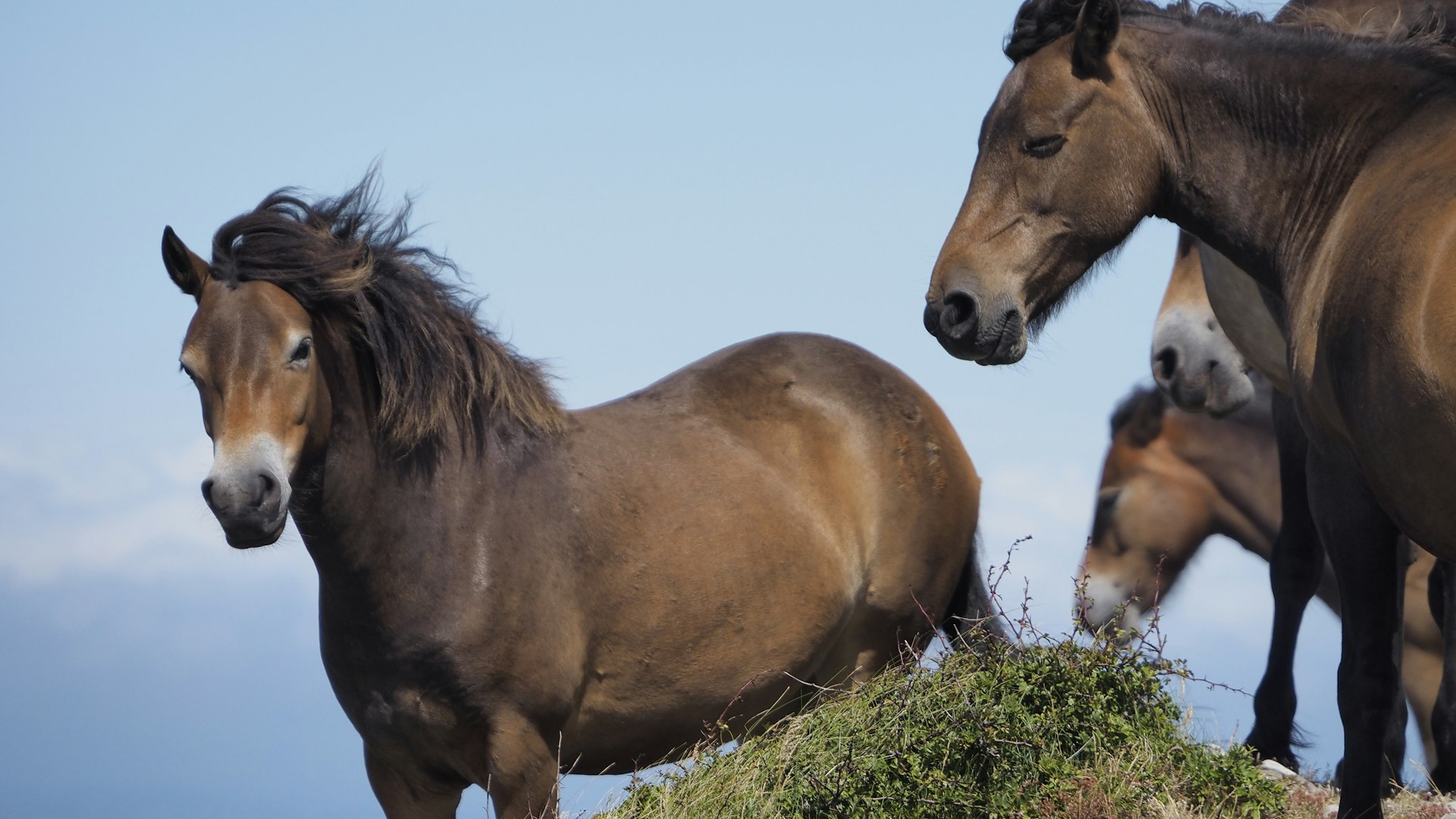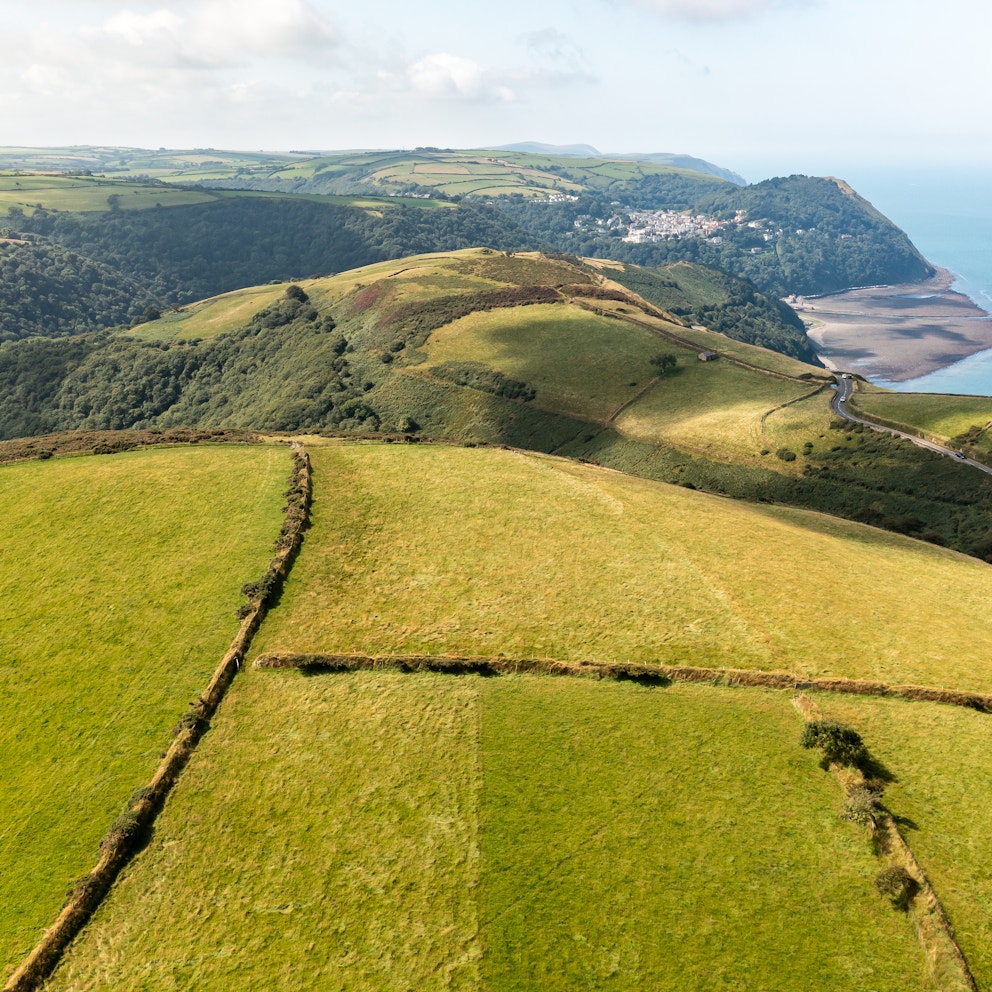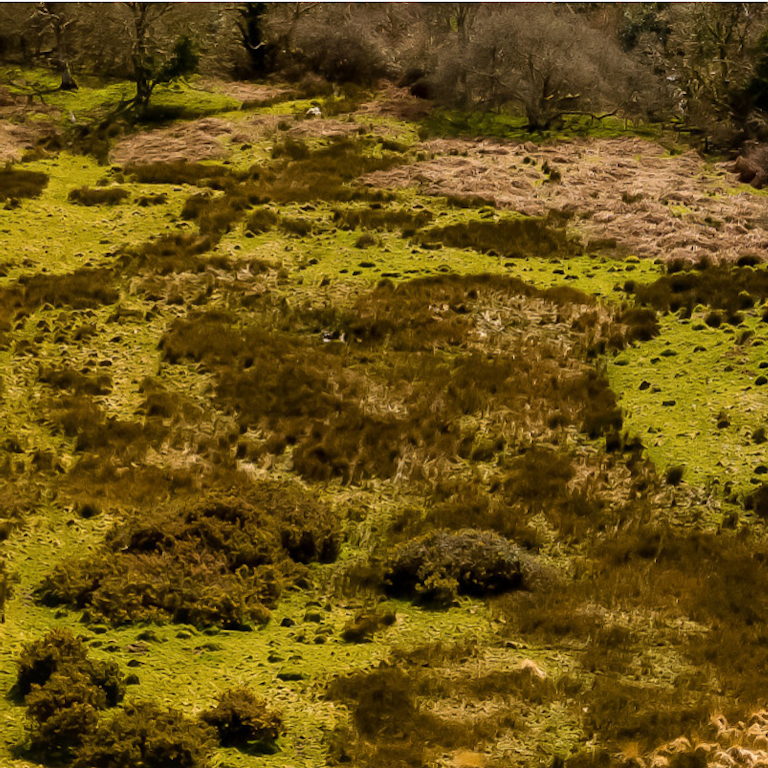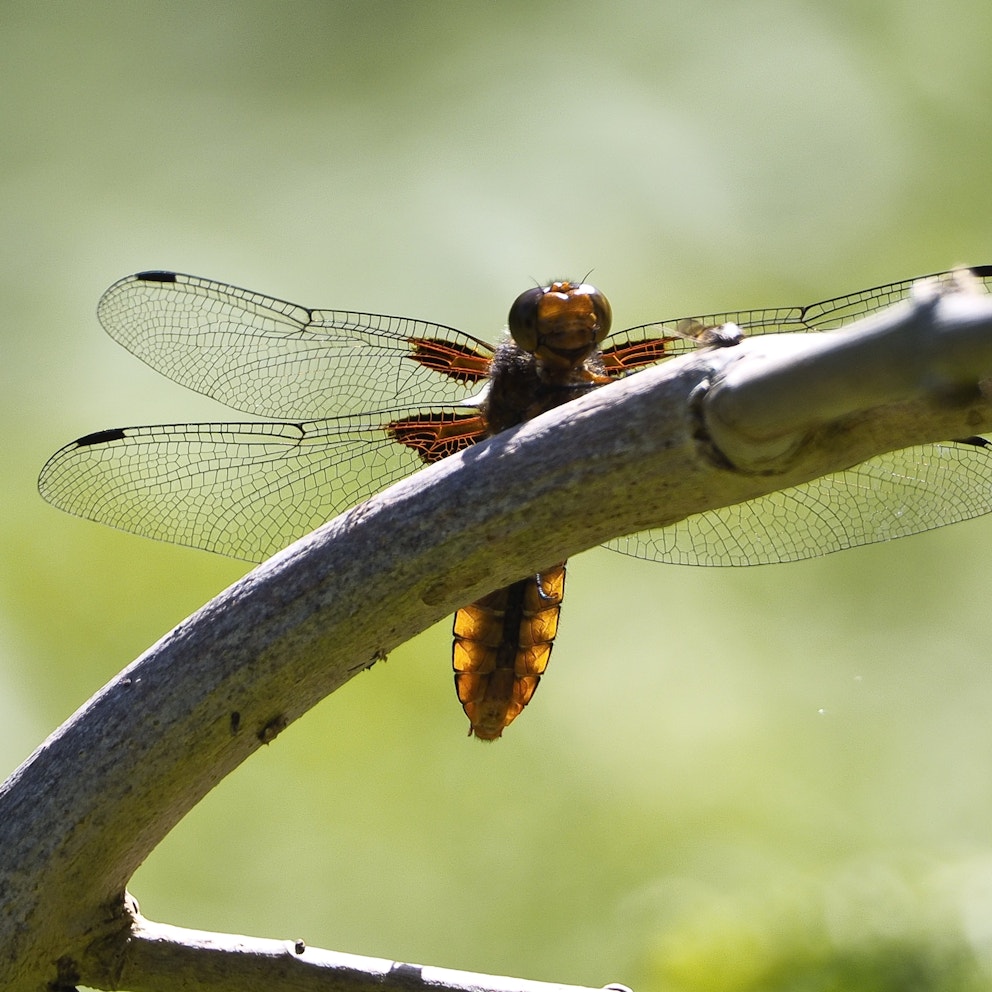Wild Exmoor
Restoring an extensive, varied and dynamic landscape for wildlife to thrive and people to enjoy.

Looking out across the landscape you are struck by the lack of order that lies before you. Wildlife here is abundant and nature is messy. Trees, like birch and sycamore, meander up and out of combes, inter-mingling with heather and gorse. Large thickets of bramble surround young thorny shrubs, whose berries invite a multitude of birdlife. Open glades are filled with welcoming hues of blue, yellow, and purple, that excite passing pollinators, and are bordered by apple, plum and cherry trees. Their pink blossom rains down like snow. Large oak and birch trees have sprung up randomly across the skyline, providing homes for bats that, once endangered are now so very common. Footpaths and viewpoints criss-cross the landscape, welcoming people in to relax, and take time to soak up the buzz of nature
Streams and rivers, which once flowed quickly though incised channels, have been reconnected with their floodplains. The water now trickles slowly, fanning out and pooling, being held in great puddles by trees, fallen deadwood and beaver dams, creating ideal mating grounds for dragon and damsel flies. Grazing animals roam freely, each doing their bit to help sustain this vision of nature. Pigs root around, opening bare patches from which new life will spring. Hardy cattle, crash their way through thick undergrowth to keep glades open, preventing them from becoming overgrown and turning into closed woodland. Whilst wallowing buffalo do their bit to prevent pools from silting up, maintaining complex open water habitats for countless wetland plants and animals. The land benefits from the animal’s poo, which provides homes for beetles and keeps the soil healthy.
This is the Wild Exmoor vision for the 1,821 hectares of land that the West Exmoor National Trust care for.
The landscape is predominantly a coastal strip of heathland, along with two steep-sided wooded river valleys, which sweep inland, and host large areas of farmland at both eastern and western extremities. The farmland to the east of the land holding stands roughly 250m above sea level at its highest point, and once supported high levels of sheep. The exposed grassland and heath had been degraded over many years of intense and sustained grazing. Currently, water flows quickly down the combes partially because the soils across the heathlands are thin, degraded and compact, mostly due to historical burning of heathland vegetation which has since ceased. Much of the land is split into large blocks of single species – heather, grass and even-aged oak.
Now, the West Exmoor National Trust team are working hard to restore natural processes and open public access across all this land. They want to encourage a much ‘messier’ and more dynamic landscape to develop, underpinned by sustainable land management, utilising a mix of carefully controlled grazing, rootling and wallowing animals, encouraging natural regeneration, planting trees and allowing areas to become much wetter by restoring wetland habitats.
KICK-STARTING REWILDING
The project team strive to look at the land as a whole and not as modular habitat types. Intensive sheep grazing has been removed, replaced with low numbers of English Longhorn cattle, Mangalitsa pigs and Exmoor ponies, who roam through the landscape. Red deer naturally occur in the area. Trees are starting to self-seed in many areas where grazing pressure has been lifted, and scrub is being encouraged. This includes across the heathland to create a mosaic of habitats and break up the blanket of single-aged heather and gorse. Wood pasture will be planted to break up the mass of grassland and to blur the edges between heathland, field, and woodland.
Land drains are being broken up in many areas which were once farmed, and deep incised channels were water was historically forced to flow are being filled in. This will slow the flow of water across the landscape and encourage large wetlands areas to develop. Other tasks that contribute to realising our vision, with a focus on restoring natural processes through intervention, include woodland management to open-up glades, and pollarding. Our hope is that although some initial work is necessary to kick-start natural processes, eventually nature here will be self-sustaining and self-governing.
Public access is important, with new cycling and walking routes being created across the wilder landscape. The project has also gained funding for a new education centre and plan to offer a variety of camping options.
As well as staff, a dedicated group of volunteers work alongside the team helping to realise its vision. The project is a long-term landscape scale approach, realising the potential for the UK’s countryside and offering a wild nature rich future for generations to come.
NATURE BASED ENTERPRISES
The existing cottage at Kipscombe has been renovated into accommodation for visitors, providing an additional income to the area and allowing visitors to connect with nature. Wild meat is also supplied to a local pub.
CARBON CAPTURE
Wild Exmoor is one of a handful of pioneering projects across England to receive government funding (from 2023) to test carbon capture methods in the fight against climate change. The scheme is assessing the effectiveness of their work – creating a wetter and wilder landscape by restoring and protecting coastal woodland, heathland habitats, species rich grassland and wood pasture – in capturing carbon and mitigating the impacts of climate change.
-

© West Exmoor National Trust -

© West Exmoor National Trust -

© West Exmoor National Trust -

© West Exmoor National Trust
future plans
- Continue wildlife monitoring, which includes bats, birds, and vegetation
- Consider additional species reintroductions to restore natural processes
- Increase access across the site
- Experiment with new approaches to restoring natural processes, including different grazing approaches

The Rewilding Network
The Rewilding Network is the go-to place for projects across Britain to connect, share and make rewilding happen on land and sea.
More about Wild Exmoor
Find out more about Wild Exmoor on their website.